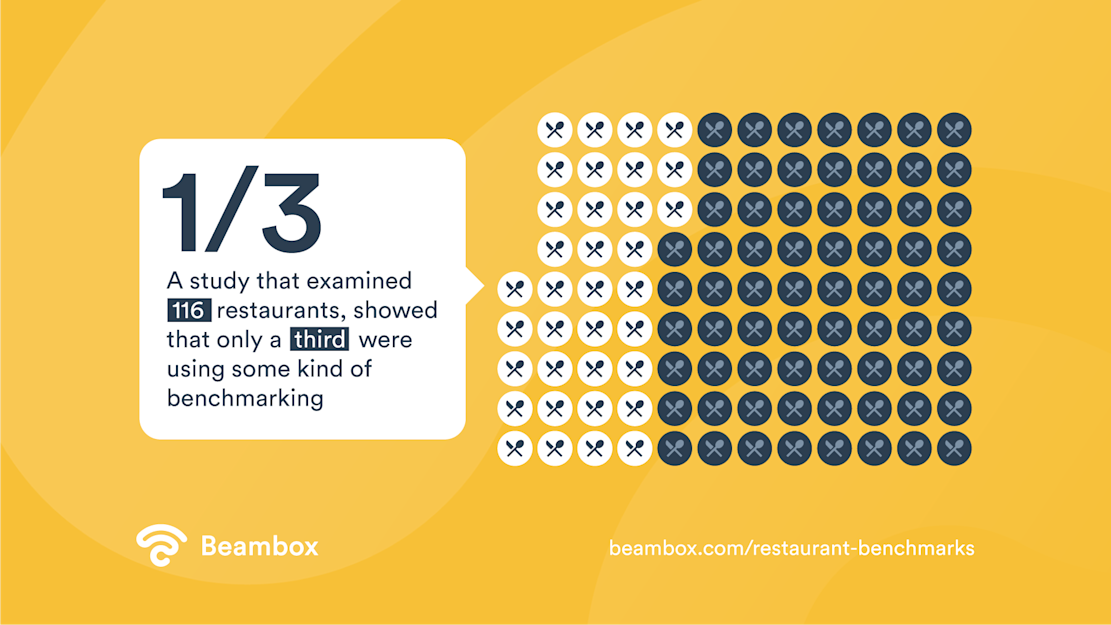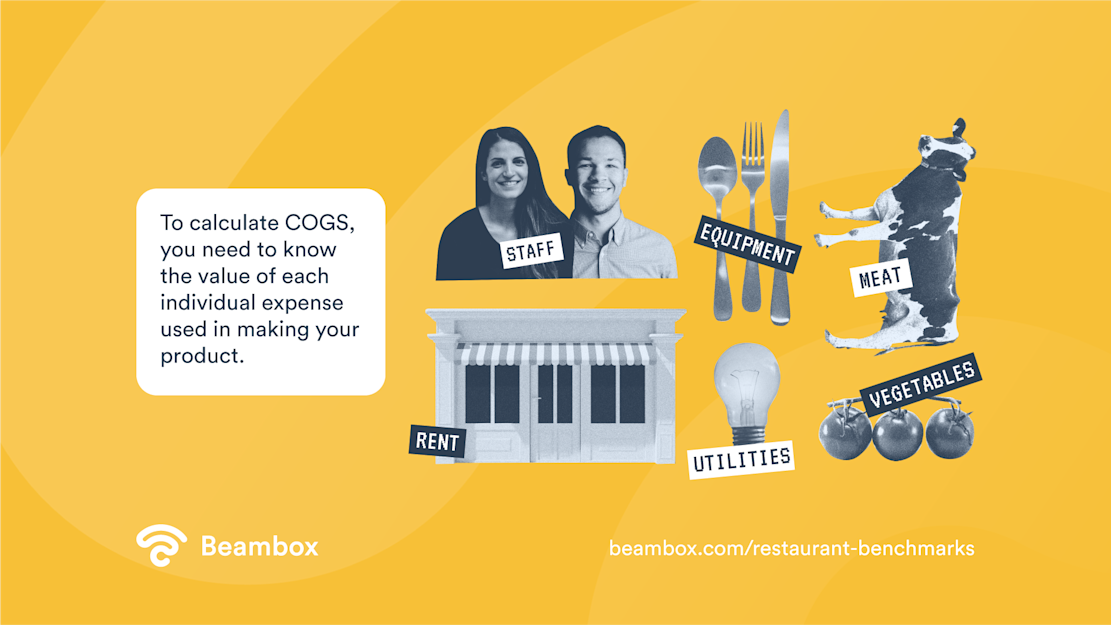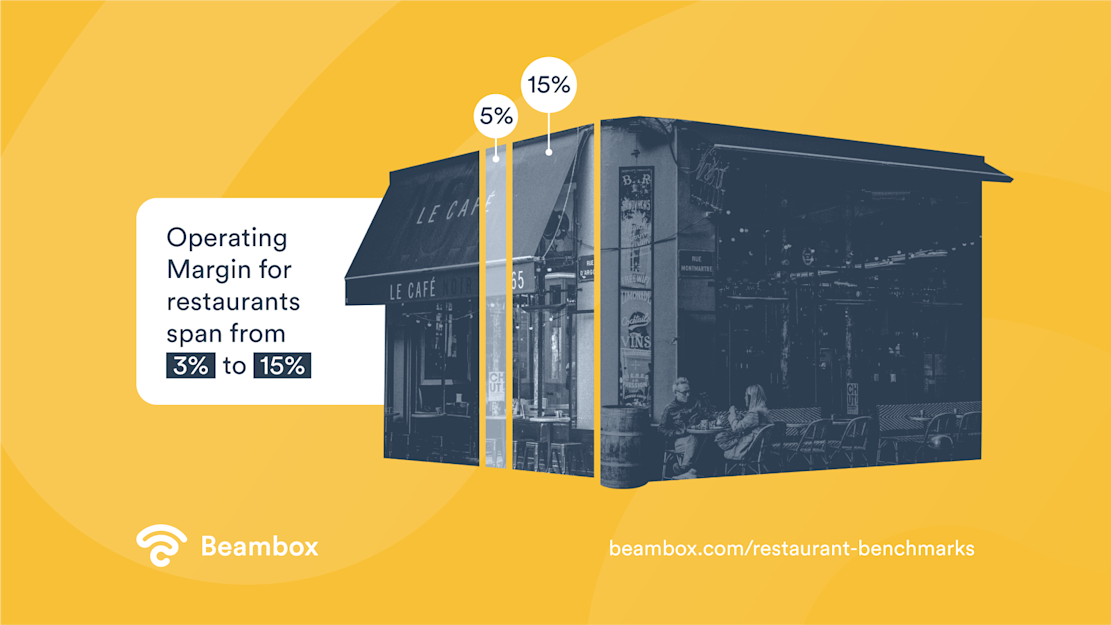Restaurants’ profitability can be evaluated on a variety of metrics, however, most benchmarks might not be relevant to your specific business.
This article collects the most important benchmarks to increase the overall profitability of your restaurant and unearth hidden opportunities.
Get ready to grab some low-hanging fruits.
Why you should benchmark your restaurant
Restaurant Benchmarks are a set of metrics that help restaurant owners assess the financial health and the sustainability of their business.
Tipically, benchmarking consider either quality or quantity factors. Therefore, you might deal with numbers or perceptions.
Common metrics include customer satisfaction, food quality, ROI, employee satisfaction, and the number of tables per square/foot.
However, the evergreen rule of data analysis is to place data in context. Therefore, a stand-alone metric can be meaningless when analyzed out of context.
Think of 2 restaurants.
One has 10 tables in a single room, and one has 250 tables in a 400-feet hall. Which one do you think is more profitable?
If the former is a 3-star Michelin restaurant, it is likely more profitable than the latter.
Benchmarking your restaurant means running the numbers to see what is TRULY going on. Nonetheless, a study that examined 116 restaurants, showed that only a third were using some kind of benchmarking.

This is a mistake that you want to avoid because
Although tracking and measuring can be unsettling, it will benefit the profitability of your business, provide a better customer experience, and uncover opportunities.
As you will see, the most important metric to know is less than 10. After you handle these data, you can decide to further expand your analysis.
With that said, let’s see what the most important restaurant benchmarks are.
Cost of Good Sold (COGS)
COGS is a critical metric for business owners, especially restaurants because it captures the direct costs associated with producing and selling a product.
COGS give you an unquestionable number that assesses the expenses to produce the dishes you sell.
To calculate COGS, you need to know the value of each individual expense used in making your product.

This includes the cost of raw materials, labor, and overhead expenses directly related to creating the dishes. However, it excludes indirect expenses such as advertisement or administrative costs.
Once you have that total, you can subtract any discounts or rebates you receive from suppliers.
The resulting number is your COGS.
However, the magic of COGS is that it can be used with other metrics to give you the fundamental numbers your business revolves around.
Now, let’s talk about margins.
Gross Margin on sales
The gross margin on sales indicates the percentage of revenues extracted from the productive factors.
In America, a good benchmark for most restaurants is between 60% and 80%.
This is the formula to calculate your Gross Margin.
Gross Margin = (Revenues - COGS)/Revenues
Although important, the Gross Margin gives you a partial picture of your business.
To gather a clear outlook of your restaurant’s profitability you want to consider the Operating margin and the Net profit.
Operating and Net Profit Margin
The Operating Margin and the Net Profit Margin are critical numbers that tell you how much money is flowing in your pocket and what elements are affecting that number.
The Operating Margin includes all the expenses related to your business (administration, marketing, accounting, etc.) However, you won’t consider taxes and interests.
Operating Margin is also called EBIT (Earning Before Taxes and Interest).
If you want to bring your calculation to the next level, you can calculate the EBITDA. In this case, you will also discount from your revenues the amortization and depreciation of your restaurants’ assets.
For simplicity, however, in this article we’re only going to use EBIT.
According to On The Line, Operating Margin for restaurants span from 3% to 15%

To calculate your operating margins, follow this formula:
Operating Margin = (Revenues - COGS - Operational costs)/Revenues
Knowing your operating margin can help you make informed decisions about pricing, production, and any area that affect your restaurant’s profitability.
A high operating margin means that the company is profitable in its operation and retains most value on each dollar of sale.
This can be due to high prices, low costs, or both.
However, considering that a restaurant can not scale up easily (You can’t double your tables in a day), reviewing the costs is fundamental.
Often, restaurateurs are more successful when reviewing their expenses considering what brings value to the customers.
To calculate your Net Profit, instead, you want to replicate the formula for your Operating margin, this time adding Taxes and Interest.
The Net Profit is how much money is left in your pocket after expenses, depreciation, amortization, depreciation, and taxes have been taken out.
Revenue per seat
This average tells you how much money a restaurant brings in for each seat in the establishment.
There are a few different factors that can influence revenue per seat.
The type of food being served is one major factor, as certain types of cuisine will be more popular than others and command a higher price tag.
Another major factor is the location of the restaurant- a spot in a busy city center will likely bring in more revenue than one in a suburban area.
Despite these variations, by understanding what revenue per seat is reached, you can get a general idea of how well your restaurant is doing.
Additionally, is the most important metric to start experimenting and figure out what can raise that number.
Ultimately, how much money your restaurant makes is the sum of how much every single customer spent visiting your restaurant.
If you find a repeatable way to raise this number, you found a repeatable way to raise your profits.
Customer Satisfaction
Do you know that Jeff Bezos, Amazon Founder, used to leave an empty chair on any boards of directors?
To Bezos, that empty chair was to remind the entire board who was really paying their wages:
The customer.
Focusing on your customer’s needs can be beneficial also for your restaurant.
Happy customers are more likely to return and, according to data, 5 times more likely to refer your business to a friend.
To evaluate customer satisfaction you will primarily use surveys and reviews.
Reviews, whether good or bad are useful because they provide a report on the overall experience.
Surveys are more granular and can help your restaurant understand what customers like and don’t like.
Additionally, you can personalize them to gather feedback in any specific domain of your business.
A famous customer satisfaction metric is the Net Promoter Score (NPS).
NPS questions are implemented in a short survey with 3 to 7 questions and ask the customers to evaluate their satisfaction on a scale of 0 to 10.
The higher the score, the higher the chance to suggest your business to their peers.
Speed Of Service
While the relevance of this metric is highly related to the type of restaurant you run, it is always wise to know how fast is your service.
Measure, on average, how long it takes for a customer to receive food since its order, depending on how busy your restaurant is.
Then, verify if that number is fair or whether you can improve it.
However, if a long wait is part of the experience (i.e. food is fresh and prepared on spot, thus needs long preparation), be sure to make the wait pleasant.
An unexpected and kind gesture like a little starter or a glass of wine can be remarkable for the overall experience.
Conclusion
As you read, the relevant benchmarks for your restaurants revolve mostly around hard numbers.
However, behind those numbers, there are real people that are experiencing a pleasant moment.
Start using these benchmarks and measure how your business is going and how you can improve its profitability. Sometimes, less is more.